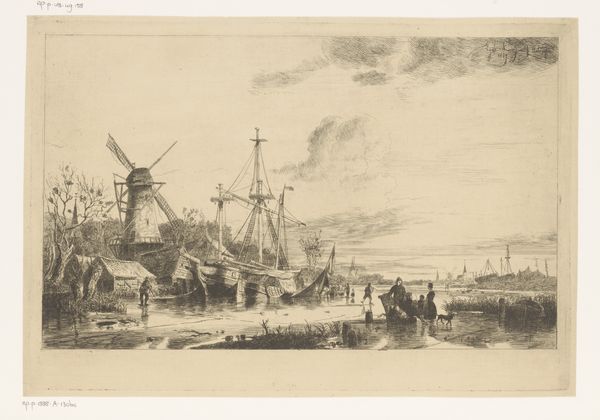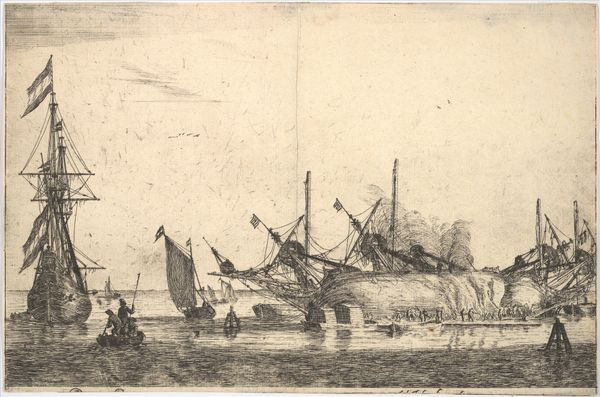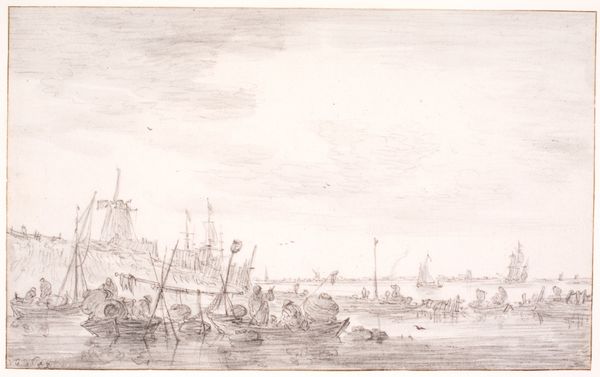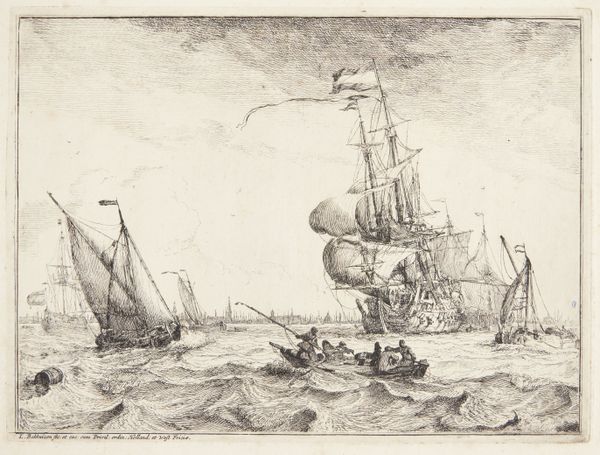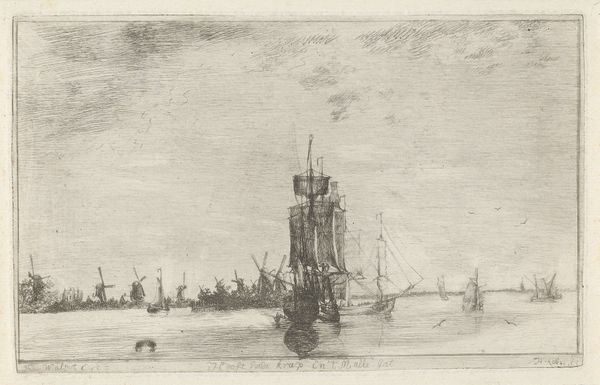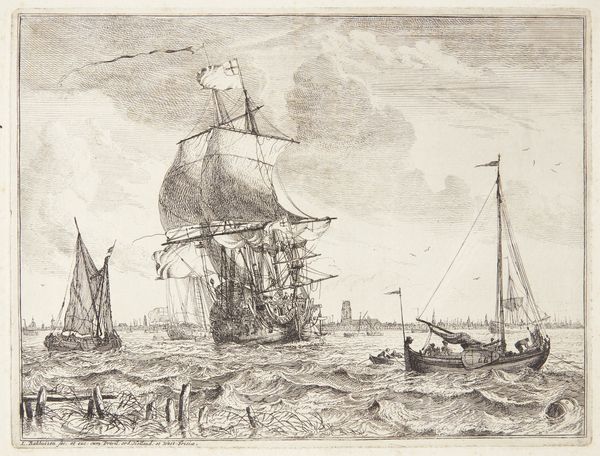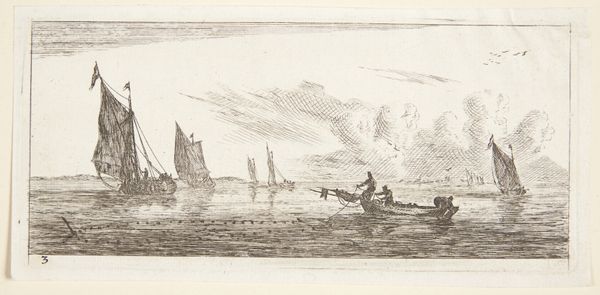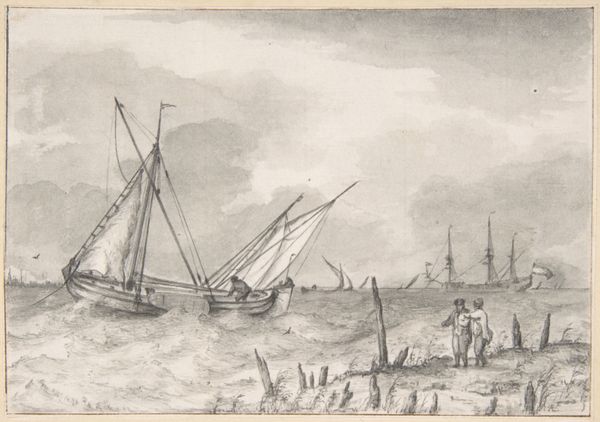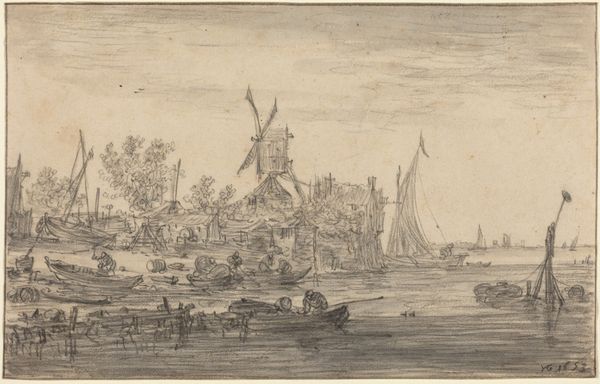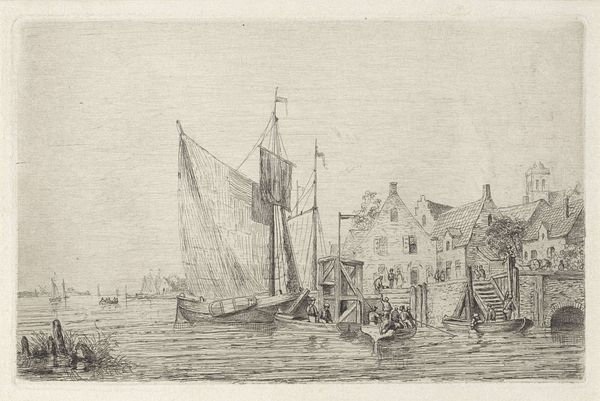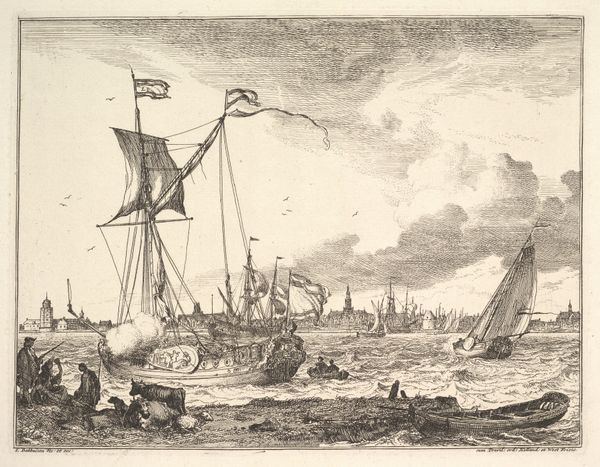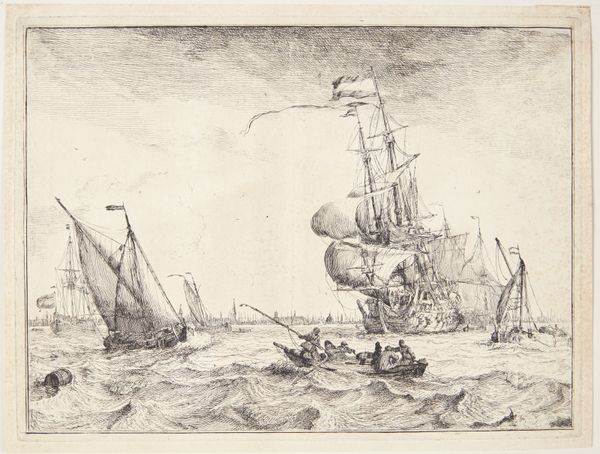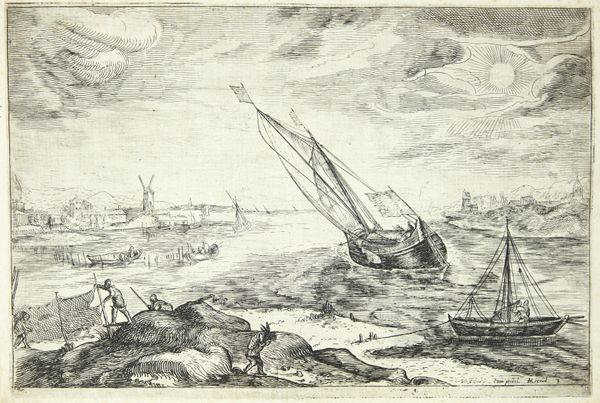
print, etching
#
dutch-golden-age
# print
#
etching
#
landscape
Dimensions: 190 mm (height) x 291 mm (width) (bladmaal)
Editor: Here we have Reinier Nooms' etching, "Kalfatring af tre skibe," placing it somewhere between 1623 and 1664. It’s a chaotic scene, almost apocalyptic with these ships askew in the water, yet there are people busily working on what looks like a pier in the foreground. What strikes you about this work? Curator: The chaos you observe is palpable. However, within that disorder, I see a powerful depiction of labor and its complex relationship to global trade during the Dutch Golden Age. Consider how maritime activity – shipbuilding, repair, and seafaring – directly facilitated the growth of capitalism and, subsequently, colonialism and the exploitation of resources and people. This image presents labor as a core tenet. Editor: So, you’re saying that instead of just seeing a scene of boats being repaired, we should also think about what that activity meant in a global context? Curator: Exactly. Think about the Dutch East India Company. This print, created using etching techniques, wasn't just art; it was a document of an economic engine, intricately connected to the historical contexts of resource extraction, power dynamics, and the very foundations of what we now recognize as globalized capitalism. The activity depicts, perhaps even unconsciously, labor and empire at play. What's represented and what's left unsaid. Editor: That’s a perspective I hadn’t considered. It gives a completely different layer of meaning to something I saw as just a historical scene. Curator: It allows us to critically examine not just what is represented, but what the implications are when images become representations of power, wealth, and global dynamics, don’t you think? Editor: I do. I will never look at a boat the same way again! Curator: I hope not. Considering art and its place within social movements can make a tangible impact.
Comments
No comments
Be the first to comment and join the conversation on the ultimate creative platform.
